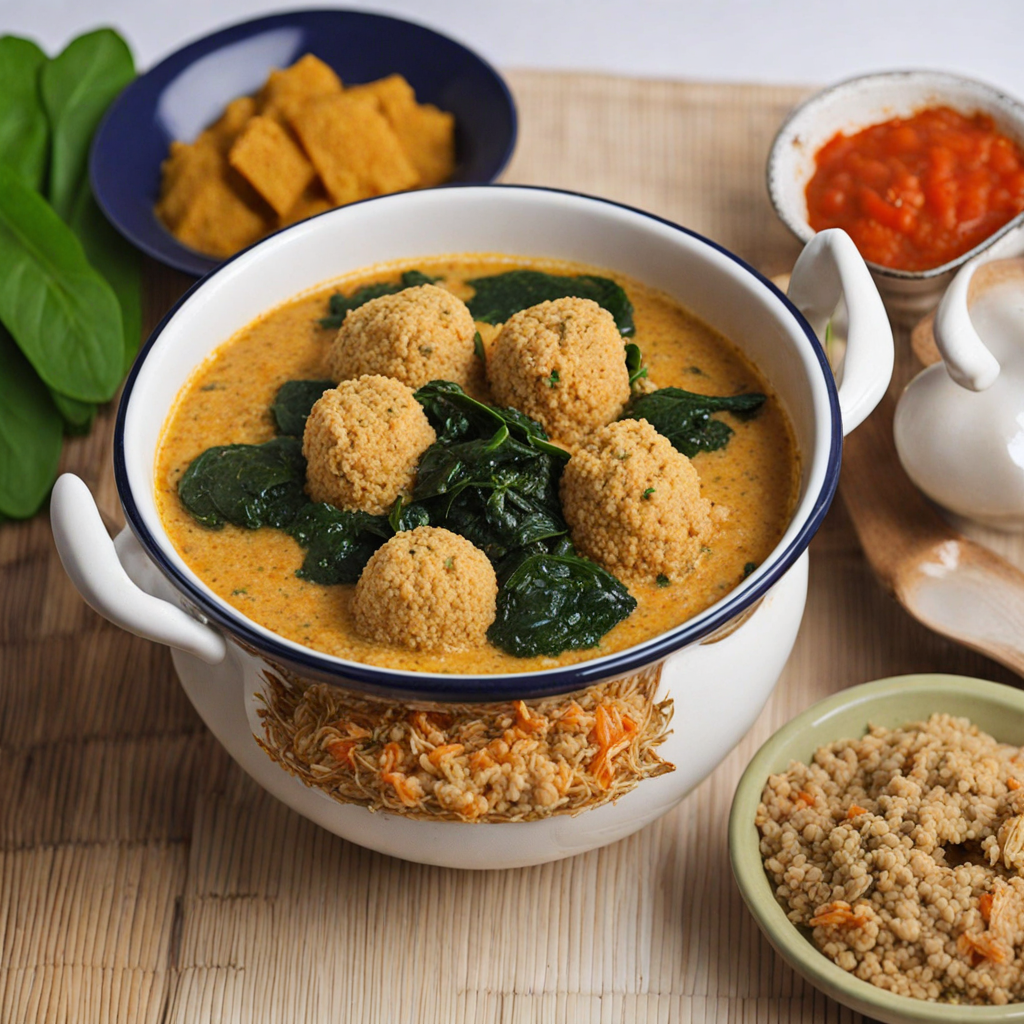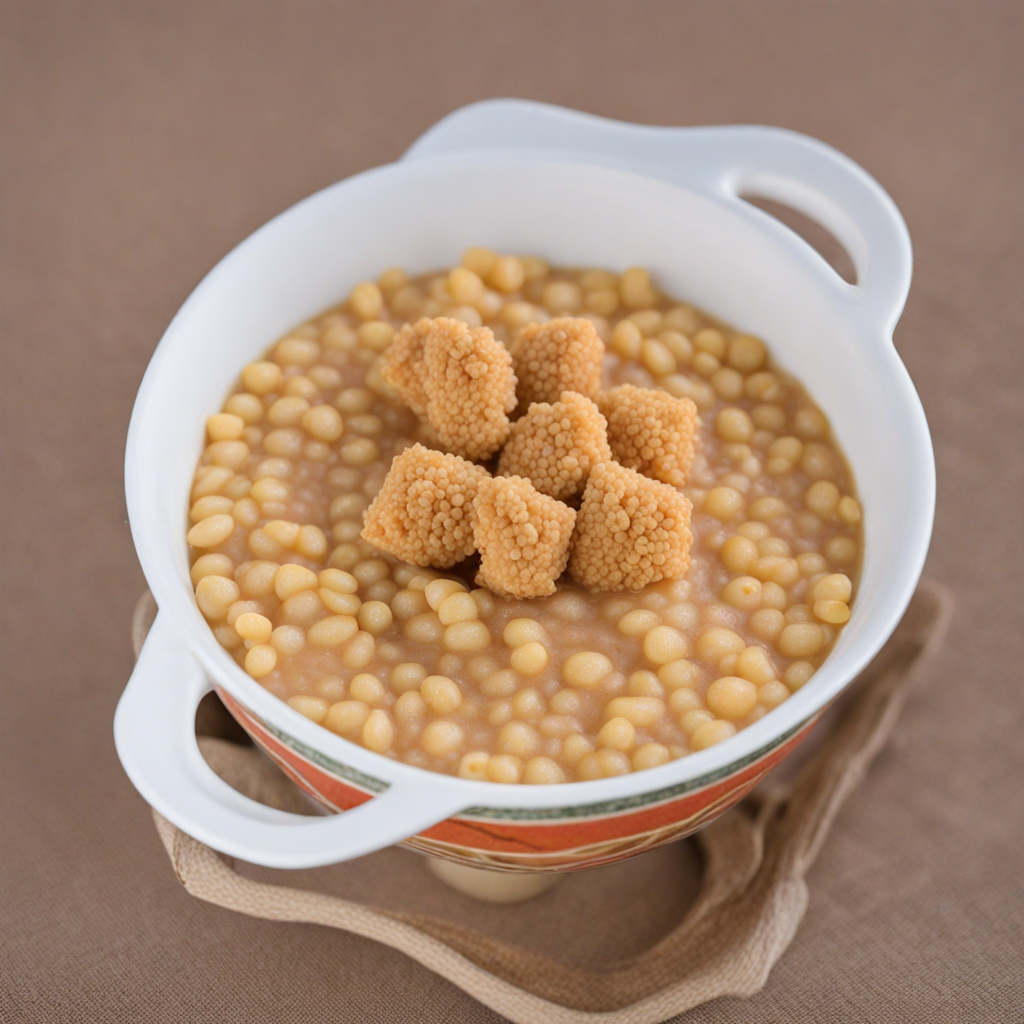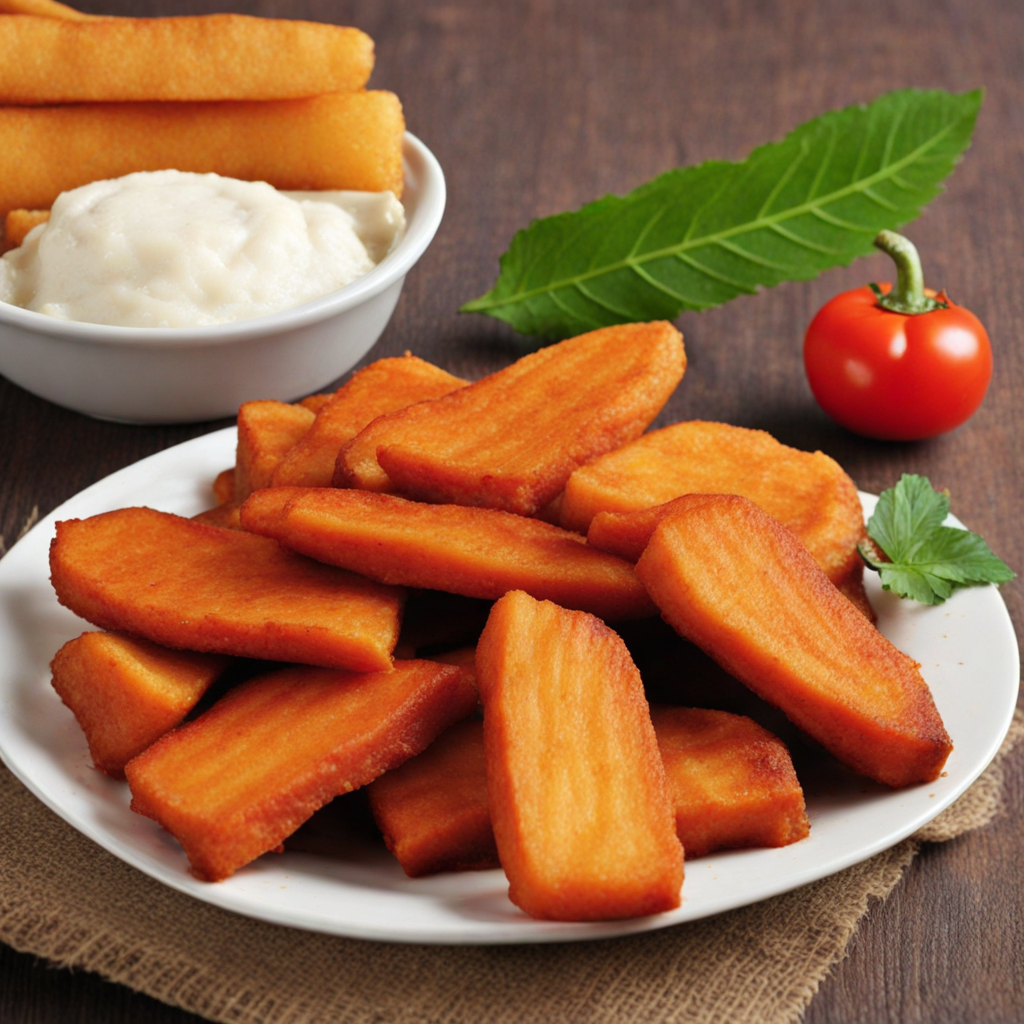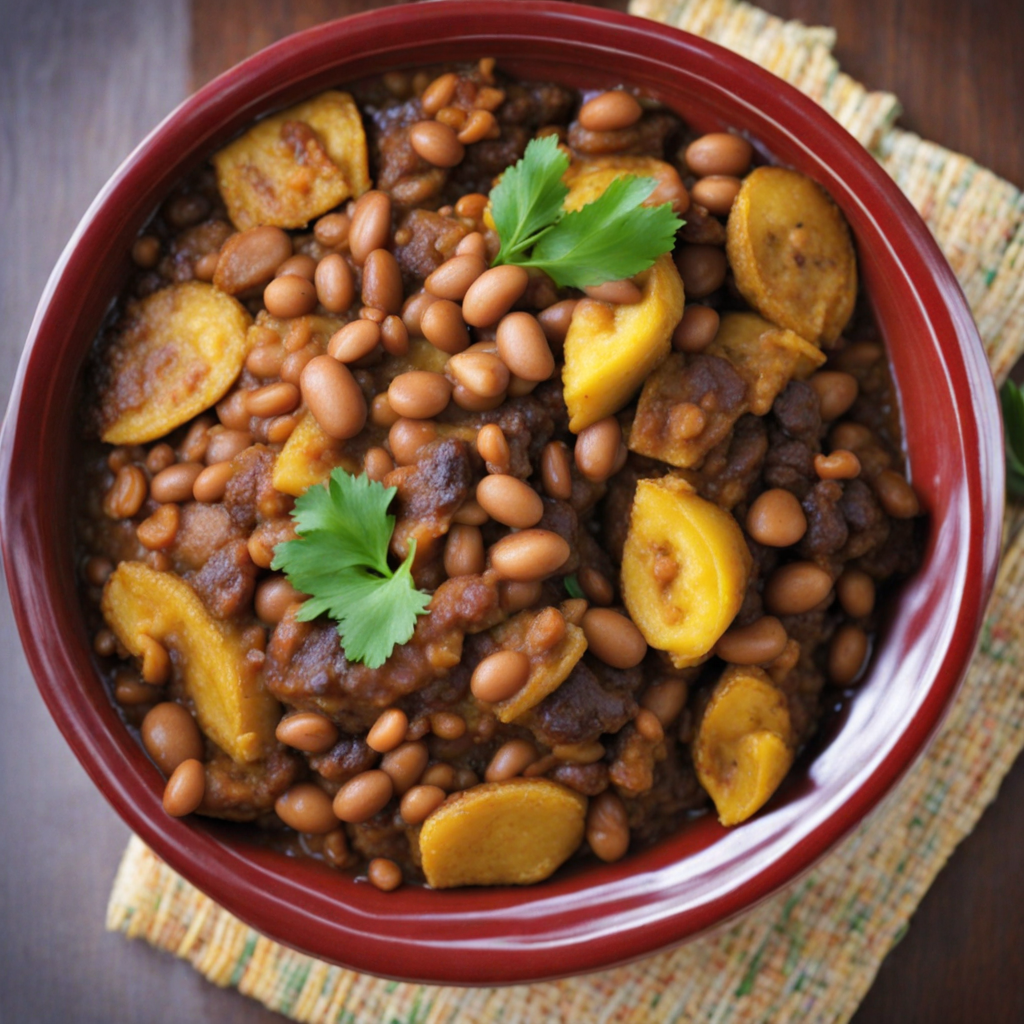Akara
Akara is a delightful Nigerian snack made from black-eyed peas, which are soaked, blended, and then deep-fried to create a crispy exterior and a soft, fluffy interior. The process begins with removing the skins from the peas, followed by blending them into a smooth paste. This paste is often seasoned with onions, peppers, and spices, giving it a vibrant flavor profile that is both savory and satisfying. The bright yellow-orange hue, typically achieved by adding a touch of ground pepper or spices, makes Akara visually appealing as well. Once the mixture is ready, small portions are dropped into hot oil, where they sizzle and puff up into golden-brown fritters. The frying process creates a delightful contrast between the crunchy outer layer and the tender inside, making every bite an experience of texture and taste. Akara can be enjoyed as a breakfast item, a snack, or even as an appetizer, often paired with spicy sauces or served alongside a warm, fluffy bread. The flavor of Akara is wonderfully versatile; it can be enjoyed plain or with various toppings and dips. Some people like to accompany it with a spicy pepper sauce, while others prefer it with a sweet accompaniment like honey. The dish is not only a staple in Nigerian cuisine but also holds a special place in the hearts of many who savor its comforting taste and aroma, making it a must-try for anyone looking to explore the rich tapestry of Nigerian flavors.
How It Became This Dish
The History of Akara: A Nigerian Culinary Treasure Akara, a beloved food in Nigeria and beyond, is a deep-fried bean cake made primarily from black-eyed peas or cowpeas. Its roots trace back to ancient African culinary traditions, where beans served not only as a source of sustenance but also as a medium for cultural expression. This delectable snack embodies the rich tapestry of Nigerian history, culture, and communal life. #### Origins of Akara The origins of akara can be traced back to the West African region, with beans being cultivated for thousands of years. The black-eyed pea, in particular, has a long-standing history in Nigeria, where it thrives in the warm climate and fertile soils. Traditional methods of preparing beans date back to the early civilizations of the region, where they were often used in various forms, from soups to stews. The preparation of akara is believed to have emerged alongside the development of agriculture in Africa. The word "akara" itself is thought to have derived from the Yoruba language spoken by the Yoruba people of southwestern Nigeria. In Yoruba, "akara" refers to "bean cake," directly reflecting the primary ingredient. Over time, the dish gained popularity across Nigeria and beyond, becoming a staple in many households. #### Cultural Significance Akara is more than just a food item; it is a cultural symbol in Nigeria. Traditionally, it is consumed during breakfast, often paired with pap (fermented corn pudding) or served as a snack throughout the day. This versatility makes akara a cherished dish, enjoyed by people from all walks of life. In Nigerian culture, food plays a significant role in communal gatherings and celebrations. Akara is frequently served at weddings, birthday parties, and other festive occasions, where it brings people together over shared meals. The act of preparing and sharing akara is imbued with social significance, fostering connections among family and friends. Moreover, akara is often associated with various proverbs and sayings in Nigerian culture, emphasizing its importance. For instance, the Yoruba people have sayings that reflect the virtues of hard work and perseverance, often linked to food preparation. The frying of akara symbolizes the transformation of simple ingredients into something delightful, mirroring life's journey and the rewards of effort. #### Preparation and Variations The preparation of akara is both art and science. The traditional method involves soaking dried black-eyed peas in water until they soften, then peeling the skins by rubbing the beans between the hands. After rinsing, the peeled beans are blended with onions, peppers, and sometimes spices to create a smooth batter. This mixture is then shaped into small balls or fritters and deep-fried until golden brown. Variations of akara exist across different regions and cultures. While the classic version remains popular, some variations incorporate additional ingredients such as spices, vegetables, or fish. In some areas, for instance, ground crayfish or diced bell peppers may be added to enhance flavor. These regional adaptations reflect local tastes and customs, showcasing the dish's versatility. In contemporary times, akara has entered the realm of fusion cuisine, with innovative chefs experimenting with new flavors and techniques. Some have incorporated international ingredients or cooking methods, while others have sought to present akara in a more gourmet style, serving it with unique dips or garnishes. #### Development Over Time As Nigeria evolved through colonialism, independence, and globalization, so too did the culinary landscape. Akara remained a steadfast fixture in Nigerian cuisine, resilient to changes in society and culture. The 20th century saw a surge in urbanization, leading to the rise of street food culture. Akara vendors became ubiquitous in cities, providing affordable and delicious snacks to busy urban dwellers. During this time, akara also gained recognition outside Nigeria’s borders. The Nigerian diaspora carried the dish with them, introducing akara to new audiences in countries like the United States, the United Kingdom, and Canada. In these new environments, it became a symbol of cultural identity for many Nigerians, allowing them to connect with their heritage through food. In the 21st century, the global food movement has placed a renewed emphasis on traditional and ethnic cuisines. Akara has found its way onto menus in upscale restaurants, food festivals, and culinary events, often celebrated as a dish that exemplifies the richness of Nigerian culinary traditions. Social media has further amplified its reach, with food bloggers and influencers showcasing beautiful images of akara, enticing a new generation to explore this delightful snack. #### Conclusion Akara is not just a snack; it is a reflection of Nigeria's diverse culinary heritage and cultural richness. From its ancient origins to its modern adaptations, akara represents resilience, community, and the joy of shared meals. It embodies the spirit of Nigerian hospitality, reminding us of the importance of food in bringing people together. As we look to the future, akara will undoubtedly continue to evolve, influenced by both tradition and innovation. Its journey reflects the dynamic nature of cuisine itself—rooted in history yet ever-changing, a testament to the creativity and resourcefulness of those who prepare and enjoy it. Whether in a bustling street market or a family gathering, akara remains a cherished part of Nigeria’s gastronomic identity, inviting all to savor its unique flavor and the stories it carries.
You may like
Discover local flavors from Nigeria







